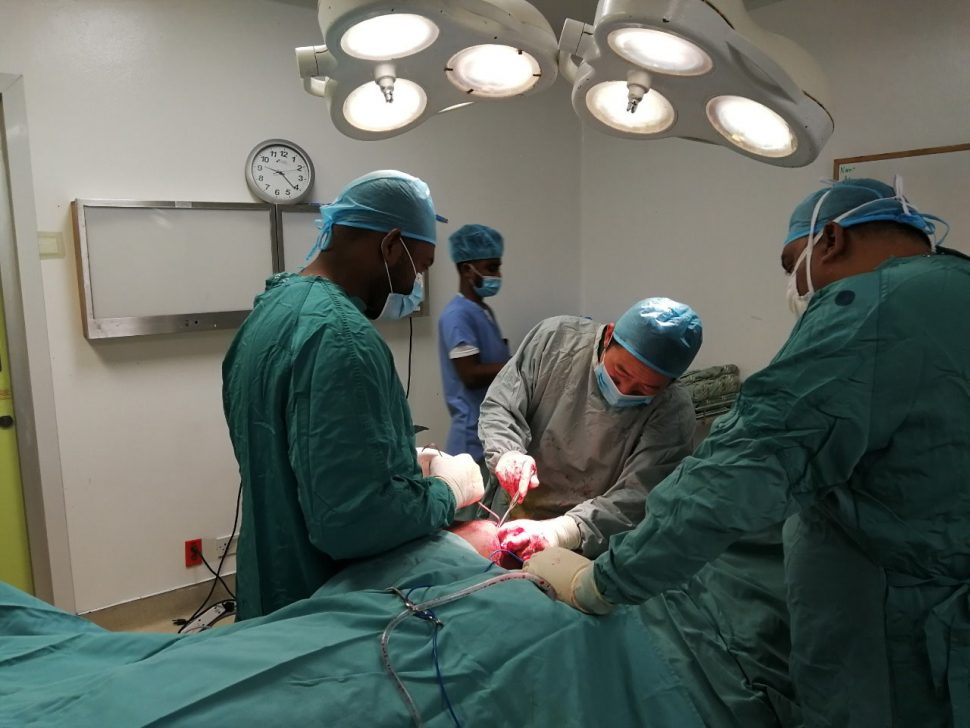The Orthopaedic Department of the Georgetown Public Hospital Corporation (GPHC), with assistance from the visiting Chinese medical brigade, recently conducted one of its first modern surgeries.
The Orthopaedic Department is the largest of its kind in the country and conducts ten operations on average daily.
Stabroek News has been informed that the recent procedure was required for a patient who was involved in motorcycle accident and sustained injuries that required treatment at the department.
Dr. Zou Guoyou, an Orthopaedist from the Chinese Medical Team who spoke with this newspaper, explained that x-ray studies of the patient’s injuries showed that the patient sustained a comminuted (multiple bone splinters) fractured tibia, with the tibial plateau collapsed.
It was noted that due to the complexity of the fracture and the difficulty involved in fixing such fractures, a pre-operative discussion among department consultants was arranged by the head orthopaedist.
Dr. Zou stated that based on the classification of the fracture as a Schatzker Type IV – a classification that usually has a very bad prognosis – surgeons initially proposed that an anterior approach be used. This specific technique would have seen two large V-shaped incisions, that is, antero-lateral and medial, being made to expose the fracture. However, this extensive approach many times leads to infection and skin necrosis because of its extensiveness.
The feasibility of using such a technique was further challenged by the surgeons based on the fact that the fracture was extending posteriorly and as a result it was decided that a CT scan be done to further study the nature of the fracture.
It was noted that though an anterior approach seemed reasonable, based on the Schatzker classification, it was the surgeons’ belief that this specific fracture seemed to be beyond the Schatzker classification. Resultantly, it was seen as necessary to study CT films before choosing a surgical approach.
Stabroek News understands that the CT films showed that the location of the fracture was mainly posterior medial, thus it was determined that the “posteromedial approach” which is said to have been mentioned in many academic literatures, would be a suitable approach. With that being the agreed technique, Dr. Zou, who has experience using the posteromedial approach in China, along with Dr. Khan from the Orthopaedic Department was able to perform the surgery, the first of its kind, at the GPHC.
It was noted that with the success of the operation at the GPHC, doctors were able to highlight the shortcomings of the Schatzker classification and benefits of the CT scan studies in assessing patients with such fracture patterns. They also now have the capacity to treat future cases of tibial plateau fracture in a more accurate manner.
Added to this is the fact that the GPHC has recently acquired a CT scan machine, thus opening even more options for surgeons at the institution.





